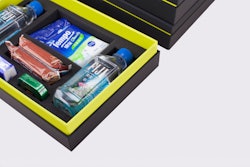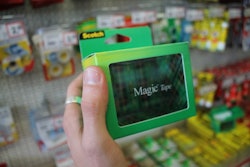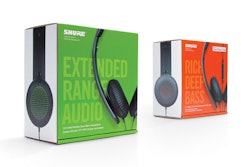
Flutes, the wavy arches between liners, put the corrugated in corrugated board, so much so that corrugated board is specified by flute. Borrowing from the GEICO commercials, "Everybody knows that," but as those commercials teach, there's always something else to be learned. Familiarity doesn't always breed contempt; sometimes it breeds complacency. It's not unusual for a corrugated box's specification to go unchanged for years on end. Implicit is the assumption that circumstances also have gone unchanged—a fallacy in thinking.
The Alphabet Song
First came A-flute, later followed by others, in alphabetical sequence. The variety of flutes bespeak a variety of properties. The greater the profile (height) of a flute the greater the stacking strength and cushioning. The greater the count (number of flutes per linear measure) the greater the flat-crush resistance. C-flute is the most utilized. C might as well stand for Compromise because C-flute is shorter than A-flute but taller than B-flute; and it has a count greater than A-flute has but less than B-flute has. It's best to discuss flutes in comparative terms rather than to assign hard numbers to their profiles and counts. That's because of differences in the corrugating process across different converters.
D-flute, for all intents and purposes, is not used in the U.S. E-flute and F-flute complete the list of the most popular flutes, consecutively smaller in profiles and greater in counts; however, as industry proceeds along the alphabet, flutes need not automatically be of the miniature variety. How large flutes eventually get—or how small—will be limited only to advancements in corrugator machinery and the determination of customers to pursue custom-tailored solutions.
Putting it to the test
A Box Manufacturer's Certificate (BMC) displays the rating from either of two tests: Mullen (a.k.a. Bursting Strength Test) or Edge Crush Test (ECT). Mullen measures the amount of force required to burst through the combined board. ECT measures the amount of force required to crush a sample of board that's standing on edge. Both ratings are affected by the box's flute (and liners), but before delving further into that association, some background on the tests might prove helpful.
Mullen is an indicator (albeit indirect) for a box's ability to withstand rough conditions (handling and ride). Its incorporation into carrier regulations harkens back to times when roughness was regarded as the major hazard to packaged cargo. Better unitizing methods, increased use of mechanical material-handling, and improved shock-absorbing systems on transportation equipment are some of the factors that have lessened concerns about roughness.
Over time, compression supplanted roughness as the greater concern, in recognition of conditions encountered not only during transportation but during storage as well, two legs of the journey wherein boxes need stacking strength against superimposed weight. But compression strength and stacking strength are not the same: the former measures the box's ability to withstand a force momentarily before collapse; the latter measures the box's ability to withstand a force throughout its time in the supply chain. So the ECT, too, is an indirect indicator; however, that hasn't prevented it from becoming the more popular rating on a BMC.
As if the indirectness between a given test and the associated box property weren't challenge enough, there's no equivalence between the tests; therefore, one rating can't be converted into the other. All of this was less imposing back when a great many shippers defaulted to what became the industry workhorse: 200 lb. Mullen test C-flute. Here, C might as well stand for Convenient because it relieved shippers from a host of considerations. It came at the sacrifice of cost-effectiveness, as shippers placed a higher premium on underpackaging than on overpackaging; after all, having a margin-of-safety is only prudent, right? Not if one has little clue as to the size of that margin.
Now and forward, competitive advantage will accrue to shippers that continuously fine-tune the elements of the supply chain. Regulations mandate that the BMC displays a Mullen or ECT rating, but that doesn't make either test sacrosanct. Their relevance to a shipper resides in how accurately their ratings correlate to the repeated performance of the boxes throughout the supply chain.
Yes, the choice of flute affects the board's thickness, strength, and cushioning (printability, too); however, there's also the issue of composition. A shipper should not uncritically accept just any grade of paperboard, regardless of how "standard" its basis weight (i.e., pounds per 1000 sq. ft.) is said to be for flute formation. To do so is to forego the opportunity—better said, obligation—to make trade-offs between flute properties and liner properties for optimal results.
Thinking outside, inside, around, and through the box
If there is one topic that symbolizes that the reign of the status quo is over, it's sustainability; unfortunately, more than an incidental amount of industry's response lacks a systems approach. There's no better example than recycled fiber. When, or should, recycled fiber be used in flutes? When, or should, such flutes be teamed with recycled-fiber-containing liners? And, overall, what percent of recycled fiber content is allowable before a box is rendered unfit for its intended purposes?
Recycling is one of the pillars of sustainability; nonetheless, recycled fibers are shorter (and therefore weaker) than virgin fibers and the more times they are recycled the shorter they get. Additionally, to know that a box (or any of its components) is of a given recycled-fiber content does not impart knowledge about which kinds of recycled materials went into the mix, or how many times any of those materials had been recycled.
In the specification of anything made of corrugated board, decisions regarding flutes carry multiple ramifications. Giving those decisions their due consideration is the best way to end up playing the magic flute.
_________________________________________________________________________________________________________________________________________________________________
Sterling Anthony is a consultant, specializing in the strategic use of marketing, logistics, and packaging. His contact information is: 100 Renaissance Center- P.O. Box 43176; Detroit, MI 48243; 313-531-1875 office; 313-531-1972 fax; [email protected]; www.pkgconsultant.com

























